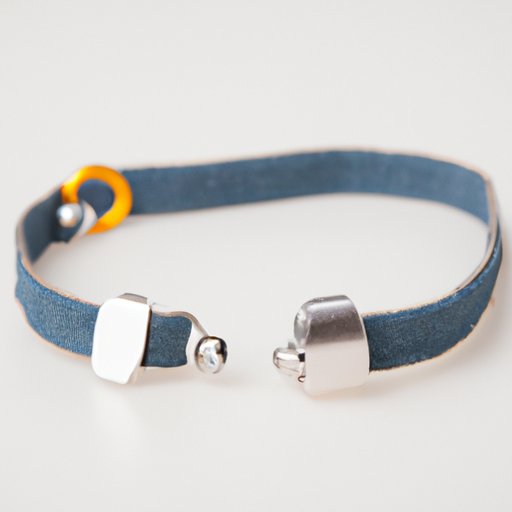Introduction
Flea collars are an effective way to protect pets from fleas and other pests. They are designed to be worn around the neck of a pet and release a combination of chemicals or natural ingredients that repel fleas. Flea collars can provide long-term protection for your pet and are generally safe and easy to use. In this article, we will explore how flea collars work, the different types available, and the pros and cons of using them on your pet.

Explaining the Basics of Flea Collars: How They Work and What Benefits They Offer
Flea collars are made up of two parts: the active ingredient and the carrier material. The active ingredient is typically a chemical compound that kills or repels fleas. It is usually released slowly over time so that it can remain effective for several months. The carrier material is usually a plastic or fabric material that holds the active ingredient and helps it spread evenly around the pet’s neck. Flea collars are designed to be worn continuously and must be replaced when the active ingredient has been used up.
Flea collars provide a number of benefits for pet owners. They are effective at killing and repelling fleas, which can help reduce the chances of your pet getting flea-related illnesses. Flea collars are also convenient and easy to use; you simply put the collar on your pet and it will do its job without any additional effort from you. Additionally, flea collars are relatively inexpensive compared to other flea treatments, making them a cost-effective option for pet owners.
An Overview of Different Types of Flea Collars and How They Work
There are three main types of flea collars: chemical, natural, and electronic. Chemical flea collars contain an insecticide such as permethrin or imidacloprid, which kill fleas on contact. These collars are generally safe for pets but may cause skin irritation in some animals. Natural flea collars contain natural ingredients such as essential oils or herbal extracts, which work by creating an unpleasant environment for fleas. Finally, electronic flea collars use electric pulses to repel fleas, though they are not as effective as chemical or natural flea collars.
How to Choose the Right Flea Collar for Your Pet
When choosing a flea collar for your pet, there are a few things to consider. First, you should take into account your pet’s weight, age, and activity level to make sure the collar is suitable for them. If your pet is small or elderly, you may want to opt for a lighter collar with a lower concentration of active ingredients. Additionally, if your pet has sensitive skin, you may want to choose a natural flea collar instead of a chemical one.
It’s also important to read reviews and compare different brands before making a purchase. This will help you determine which collar is most effective and safest for your pet. You should also pay attention to the instructions on the packaging to ensure you are using the collar correctly.

The Pros and Cons of Using a Flea Collar on Your Pet
Using a flea collar on your pet can have both advantages and disadvantages. On the plus side, flea collars are generally safe, easy to use, and provide long-term protection against fleas. They are also more affordable than other flea treatments, making them a cost-effective option. On the downside, flea collars can be irritating to some pets and may not be as effective as other methods of flea control.

Flea Collar Safety: What You Need to Know Before Purchasing One
Before purchasing a flea collar, it’s important to understand the ingredients in the product and how it works. Some flea collars contain harsh chemicals that can be harmful to pets if not used properly. It’s also important to educate yourself on proper application and usage of the collar to ensure it is being used safely and effectively.
Natural Options for Controlling Fleas with Flea Collars
In addition to chemical flea collars, there are also natural options available. Essential oils such as peppermint and eucalyptus oil can be used in homemade flea collars to repel fleas. Herbal sprays containing ingredients such as neem oil and lemon juice can also be sprayed directly onto the pet’s fur to keep fleas away.
Tips for Properly Applying and Maintaining Your Pet’s Flea Collar
Once you’ve chosen a flea collar for your pet, it’s important to follow the instructions on the packaging carefully. Make sure the collar fits properly and isn’t too tight or loose. It’s also important to check the collar regularly and replace it when necessary. Finally, make sure to wash your pet’s fur regularly to remove any fleas that may have been missed by the collar.
Conclusion
Flea collars are an effective and convenient way to protect your pet from fleas. There are a variety of types available, including chemical, natural, and electronic collars, so you can find one that suits your pet’s needs. It’s important to understand the ingredients in the product, read reviews, and follow the directions on the packaging to ensure the collar is being used safely and effectively. With the right flea collar, your pet can enjoy long-term protection from fleas.
(Note: Is this article not meeting your expectations? Do you have knowledge or insights to share? Unlock new opportunities and expand your reach by joining our authors team. Click Registration to join us and share your expertise with our readers.)
